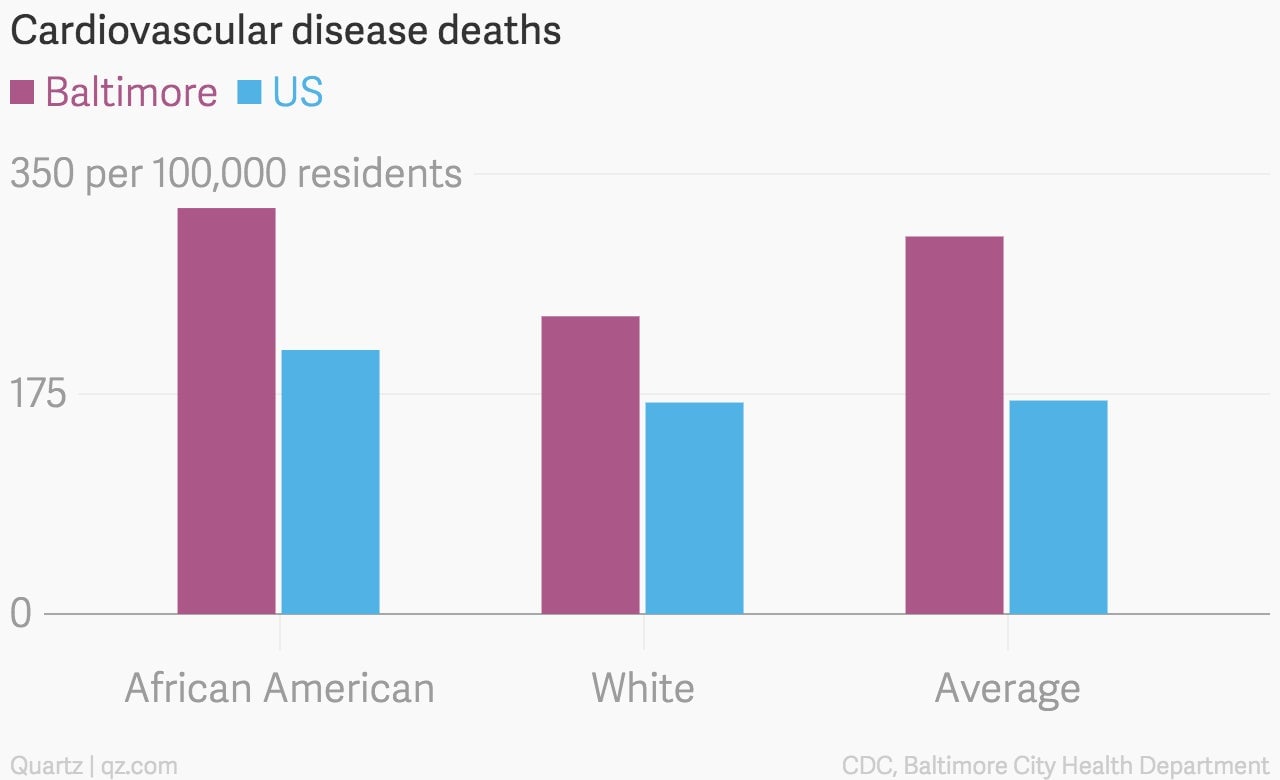Charts: Baltimore’s health data are a picture of inequality
Baltimore is home to one of the world’s most prestigious health institutions—the Johns Hopkins School of Medicine. It is also, as Forbes reports, one of the American cities with an African American majority population (64%) that is struggling with poor health.
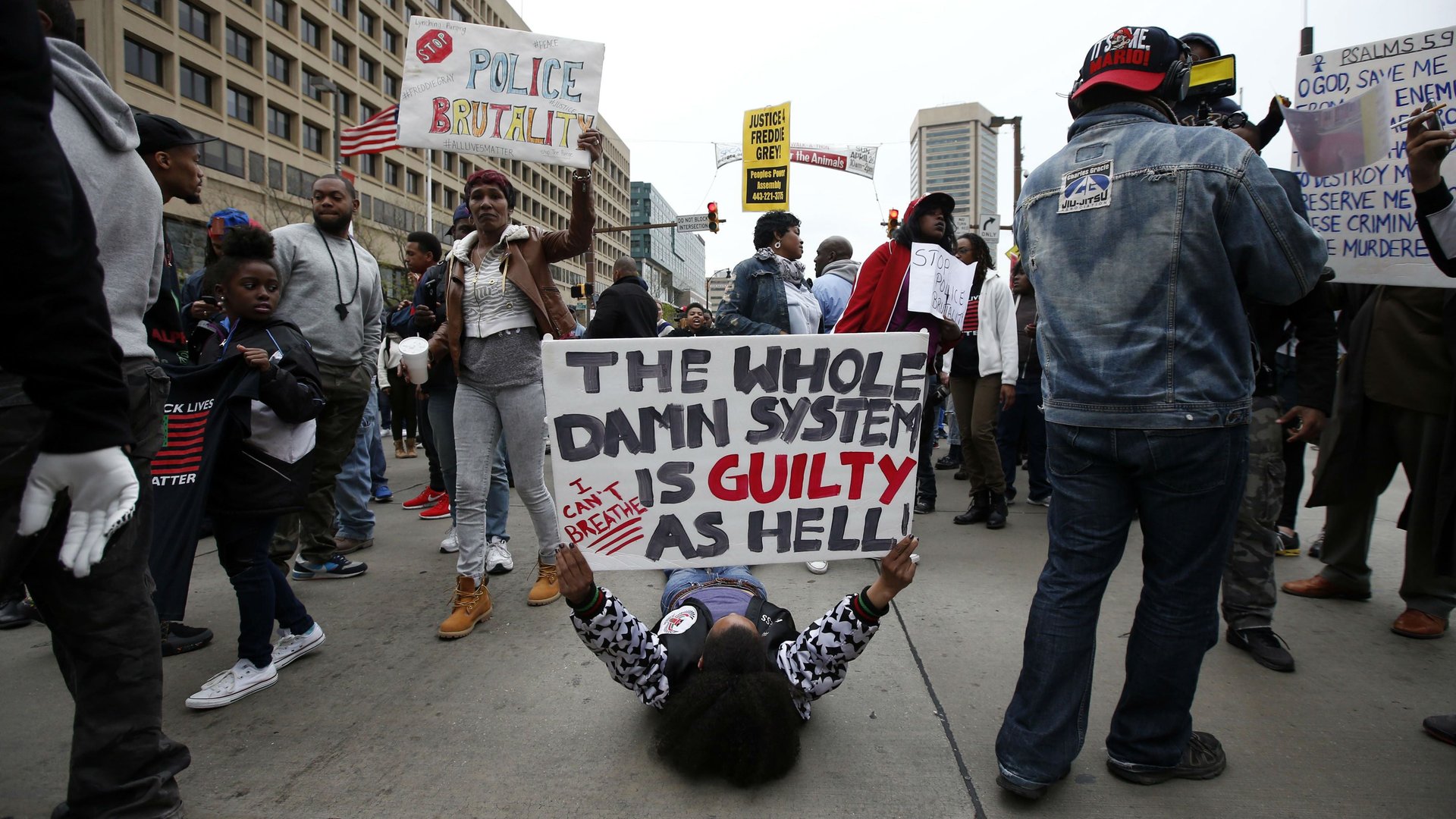

Baltimore is home to one of the world’s most prestigious health institutions—the Johns Hopkins School of Medicine. It is also, as Forbes reports, one of the American cities with an African American majority population (64%) that is struggling with poor health.
A 2012 study by Johns Hopkins Urban Health Institute (pdf) looked at the health disparity in Baltimore—similar to middle-sized cities with a majority African American population like New Orleans, or Memphis—the African American population suffers setbacks in most health markers compared to the US average. Twenty percent of Baltimore’s population (600,000) lives below the poverty line.
Baltimore’s African American population suffers the most due to lack of access to good healthcare (pdf, pg. 16): in 2012, 16.5% African American citizens suffered unmet healthcare needs in the 12 previous months. The percentage of uninsured African Americans in Baltimore (14.5%) is comparable to the white population (14.8%), but the city’s socio-economic situation impacts the health of all of its citizens, who are worse off than the national average in many indicators.
In Baltimore, the average life expectancy is 73.5 years, five years less than the national average, and for African Americans the divide is even higher: at 70.2, their life expectancy is 5.6 years lower than the US average.
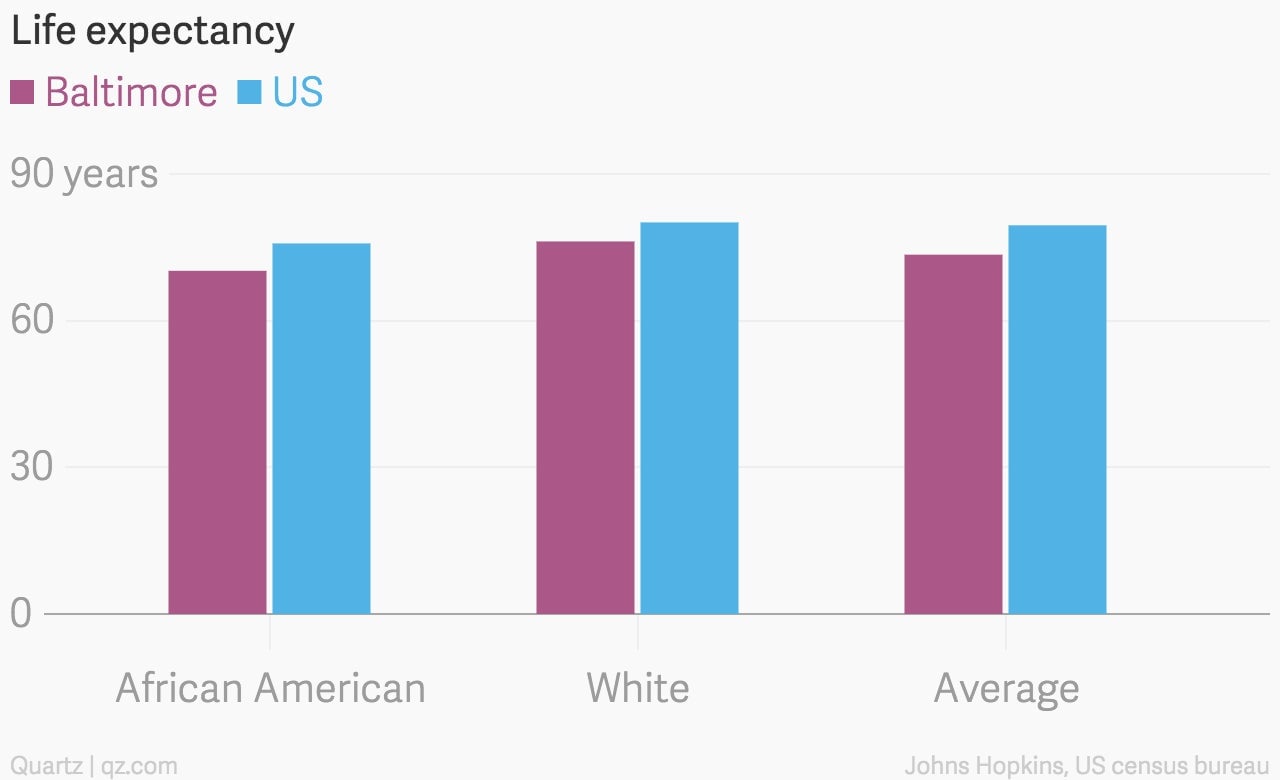
Further, the life expectancy changes dramatically according to the neighborhoods. In Hough, a predominantly poor, African American neighborhood, it’s 64 years and in Lyndhurst, a nearby wealthy, white neighborhood, is 84.
Infant deaths (of children below one year of age) has declined in Baltimore and is at levels lower than the US average for both white and African American citizens. However, children of African American residents are still more than twice likely to die than children of white citizens.
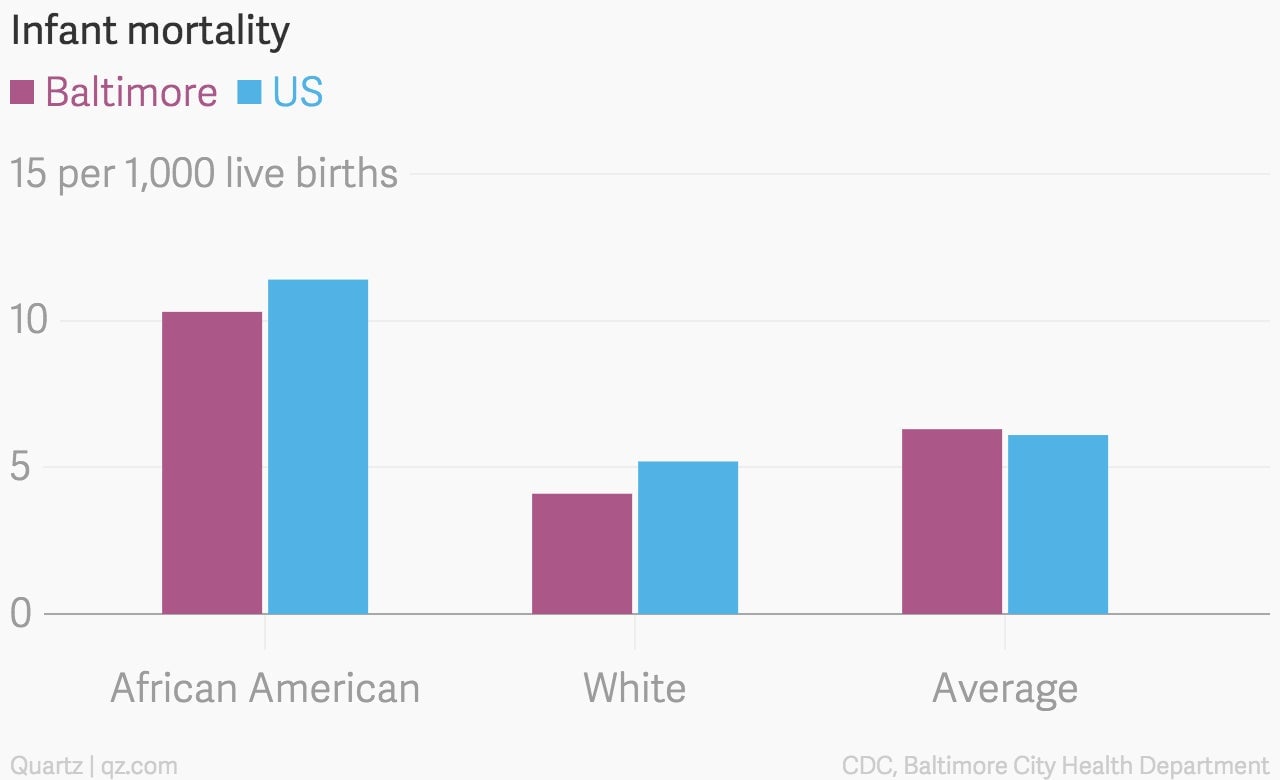
In the US, 8% of African American children, and 7% of white children, have a low birth weight (less than 5.5 lb or 2.4 kg). Amongst the African American population, nationwide, the percentage is much higher, at 11.8%, and it’s higher still in Baltimore, at 15.1%.
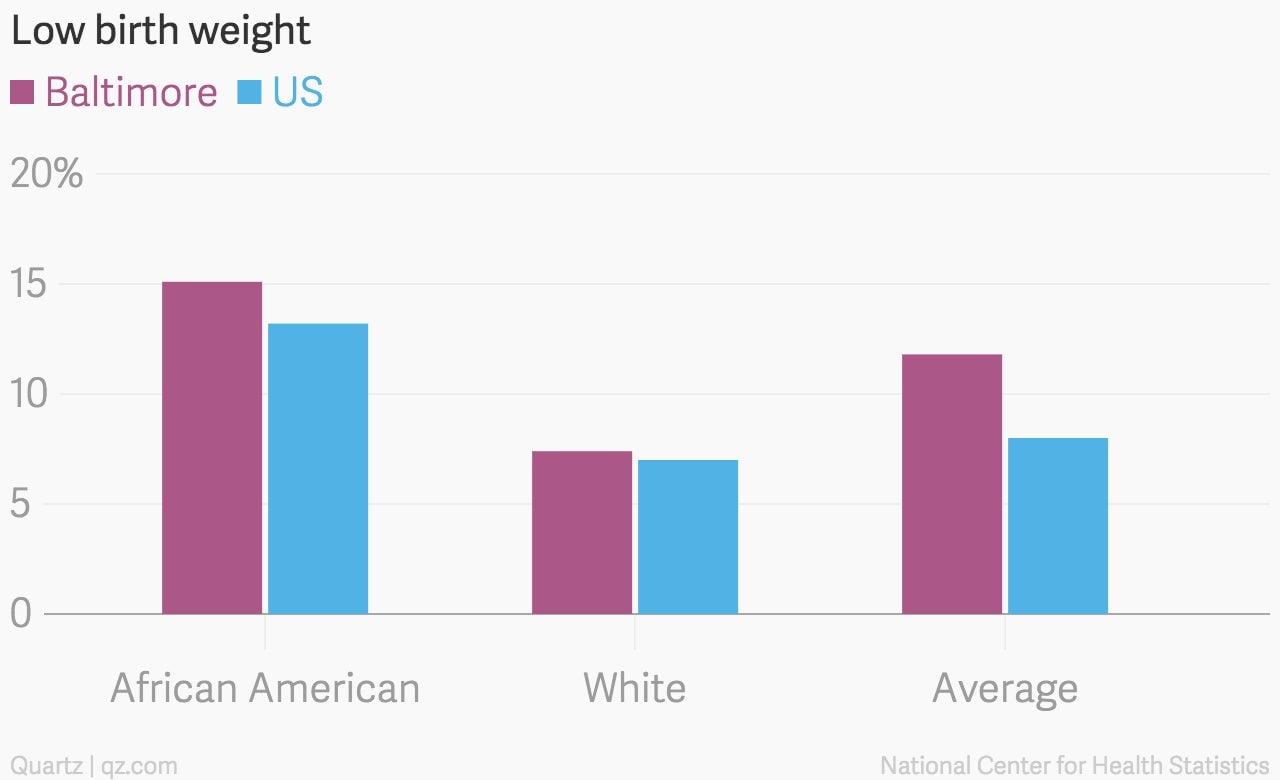
African American citizens living in Baltimore are far more likely than the overall city (and the country) population to be diagnosed with new cases of HIV/AIDS, as well as to die from the disease. African American citizens of Baltimore represent the largest percentage of HIV new diagnosis and deaths in the city, being over 10 times more likely to be diagnosed than white citizens and 5 times more likely to die.
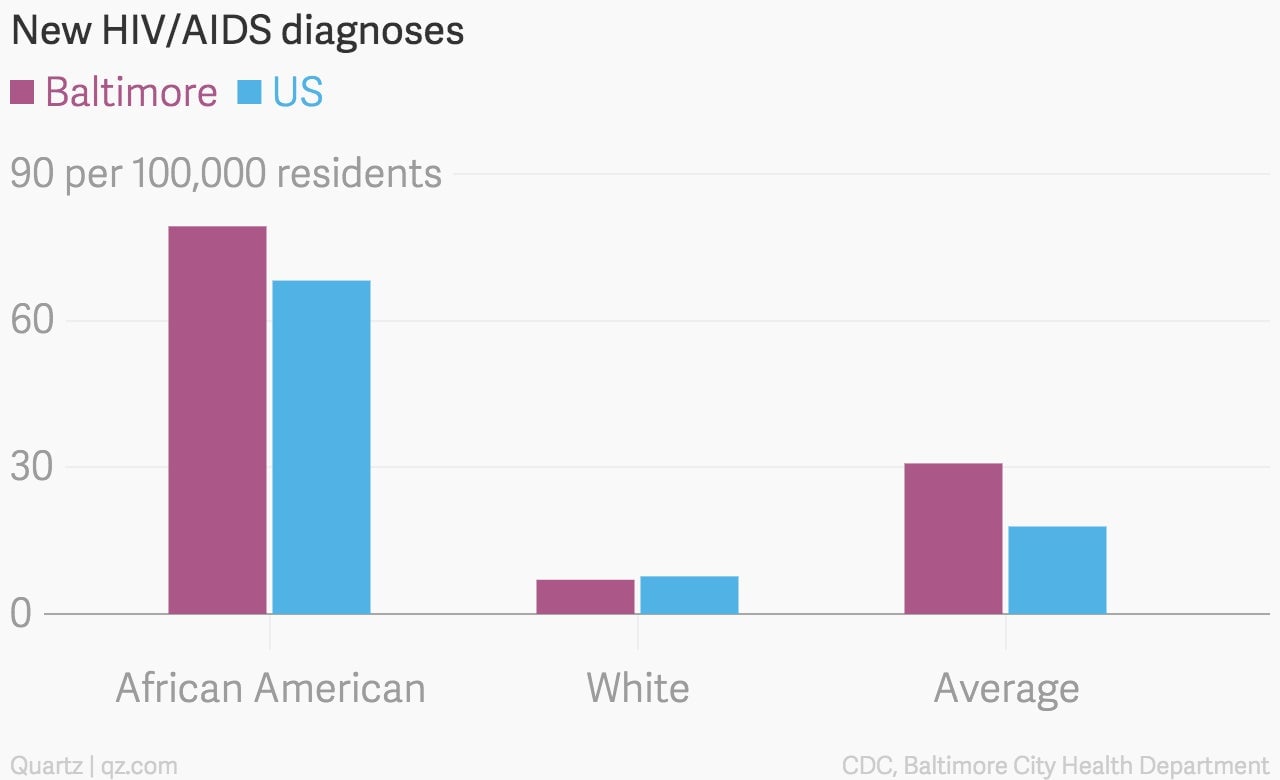
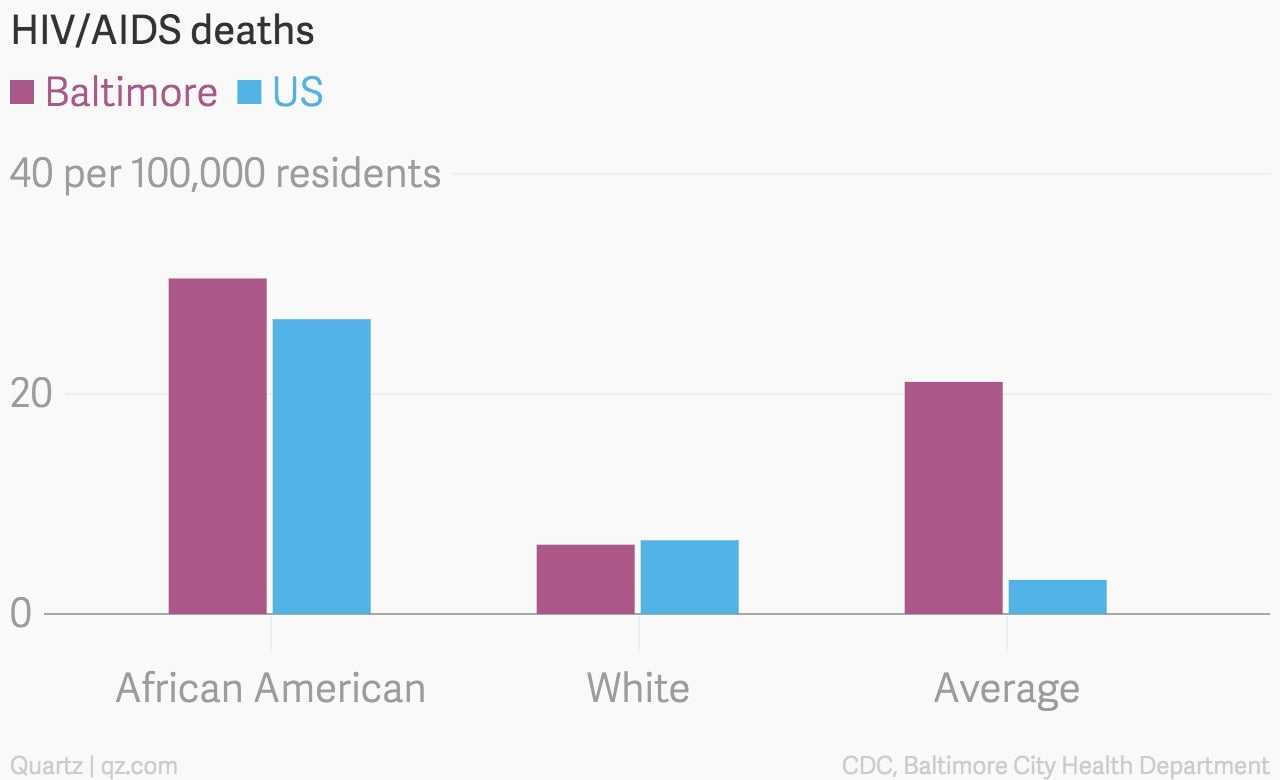
Cardiovascular disease, the leading cause of deaths in the US, follows the same pattern, being more prevalent amongst Baltimore’s African Americans than the US average, the US overall African American population, and Baltimore’s whites.
